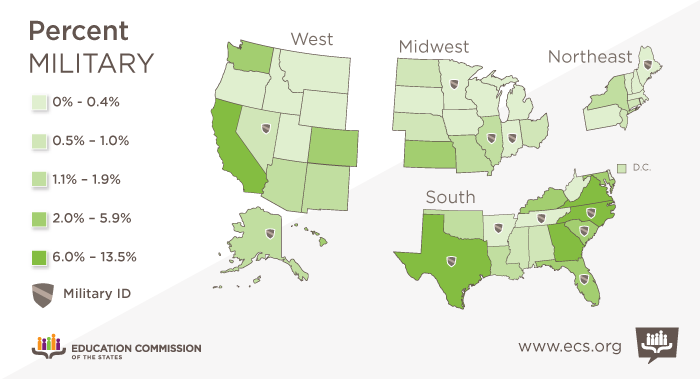Imagine you are a military spouse with three school-aged kids. One morning, you get a call from the department of defense telling you that your family will be changing home base to a different state within the next three months. You wonder how your kids will adjust; this is your fourth move in as many years. You wonder whether your credentials as a registered nurse will transfer to the new state, which is critical to your continued employment. And you start looking at real estate, trying to find a home that will fit your family, your finances and your need for quality education options for all three of your kids.
 Pretty overwhelming, isn’t it? As we’ve documented, these struggles are all too familiar to the 1.3 million military families in the U.S. today. They are repeatedly asked to uproot and re-establish a new home base, a process that is more likely to be successful if there is localized transition support for service members, their spouses and children. In practice, that support can be very uneven. Attrition — service members leaving the military — is a significant problem in the current all-volunteer U.S. force.
Pretty overwhelming, isn’t it? As we’ve documented, these struggles are all too familiar to the 1.3 million military families in the U.S. today. They are repeatedly asked to uproot and re-establish a new home base, a process that is more likely to be successful if there is localized transition support for service members, their spouses and children. In practice, that support can be very uneven. Attrition — service members leaving the military — is a significant problem in the current all-volunteer U.S. force.
These issues have come into high focus this year. In February, the secretaries of the Army, Navy and Air Force sent a letter to the National Governors Association, encouraging state leadership to examine the quality of schools and the reciprocity of professional licenses for military families. In part, this letter indicated these factors would influence future mission-basing decisions. Beginning in September, leaders of the armed forces have engaged multiple organizations, including ours, in conversations to consider how these recommendations might effectively be put into practice.
Some of this work has already begun; the Occupational Licensing Project (OLP), while not military-specific, is currently examining opportunities to develop more consistent license reciprocity across states. Other parts of the work will require future engagement by states, districts and schools. In terms of school quality data, for instance, the Every Student Succeeds Act requires states to use a Military Student Identifier to track and report on the academic achievement of military-connected youth. While some states were already using a form of MSI, the ESSA requirement provides an opportunity for all states to consistently examine how well schools are serving military families specifically.
Although ESSA's state-level MSI reporting requirement is limited, the armed services are examining how they might work with states to leverage the MSI-related information to improve upon existing support structures for military families. For instance, the Military Interstate Children’s Compact Commission was established in 2009 to ensure consistency in transition policy in states and districts. While all 50 states have signed on, current implementation is highly variable across states. The data associated with the MSI could help the armed services better understand where military families are being well-served and where they are struggling to get support.
Our armed service members and their families do so much for our country; initiatives such as the OLP and the MSI may, in turn, help our country better support them.









